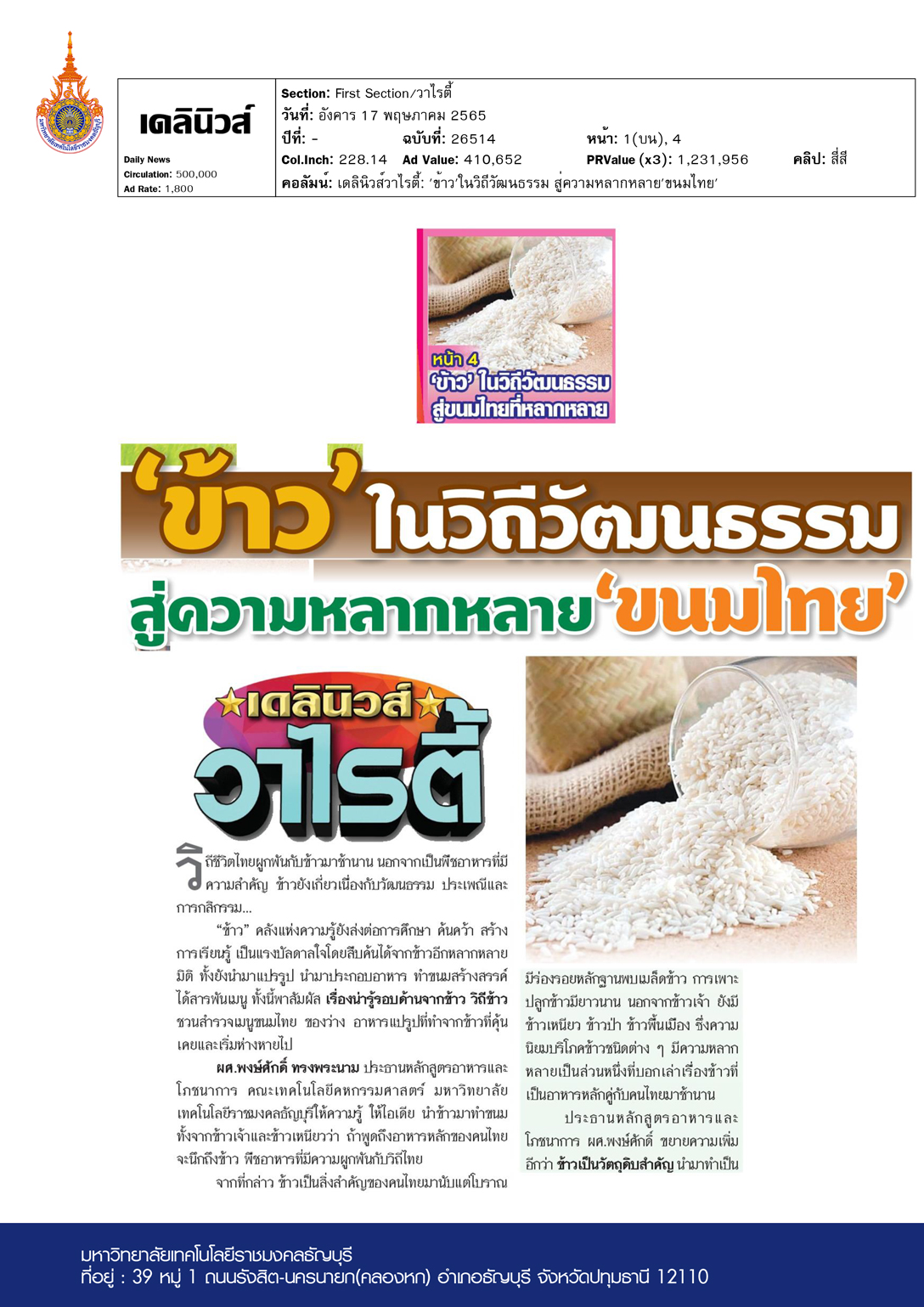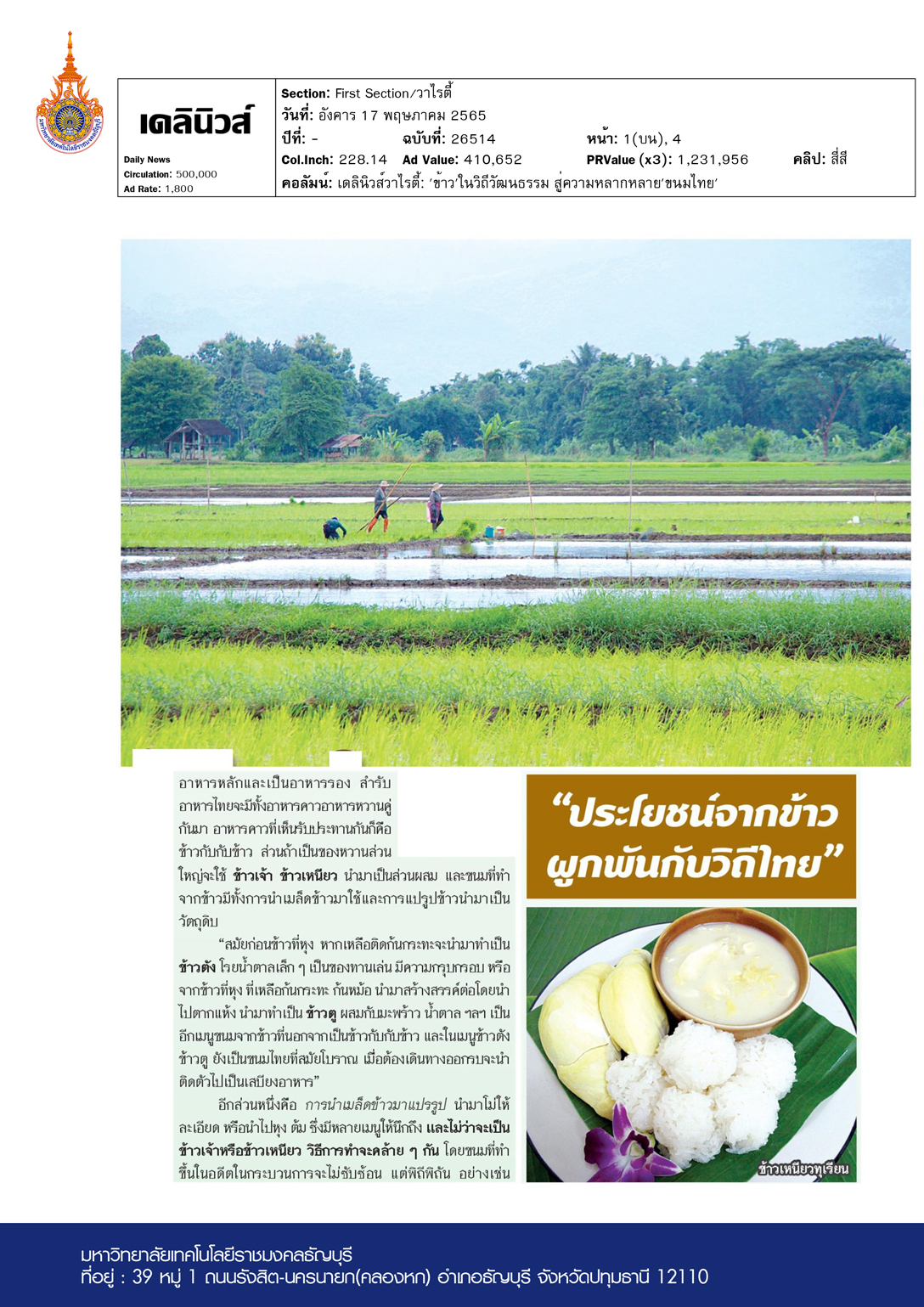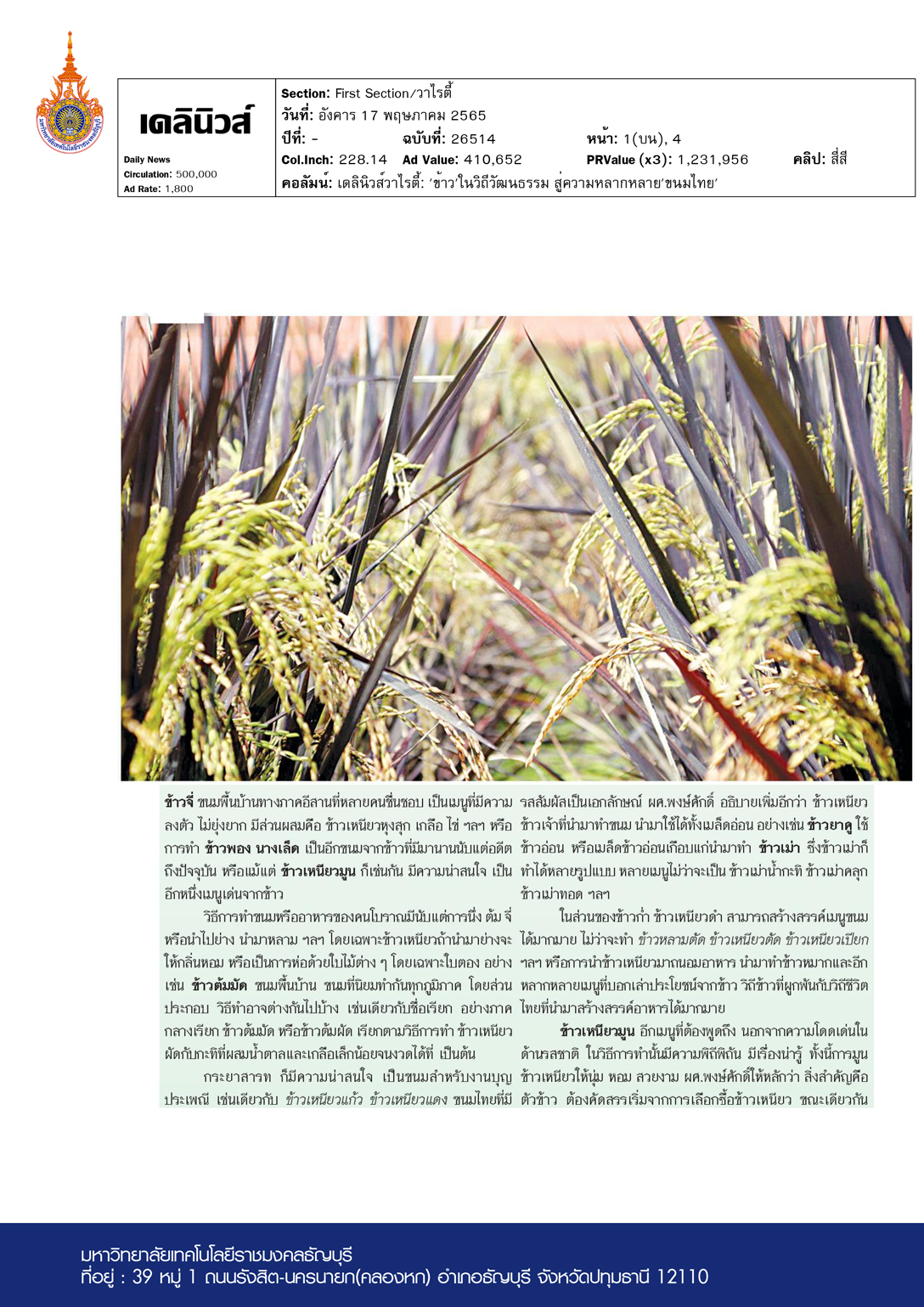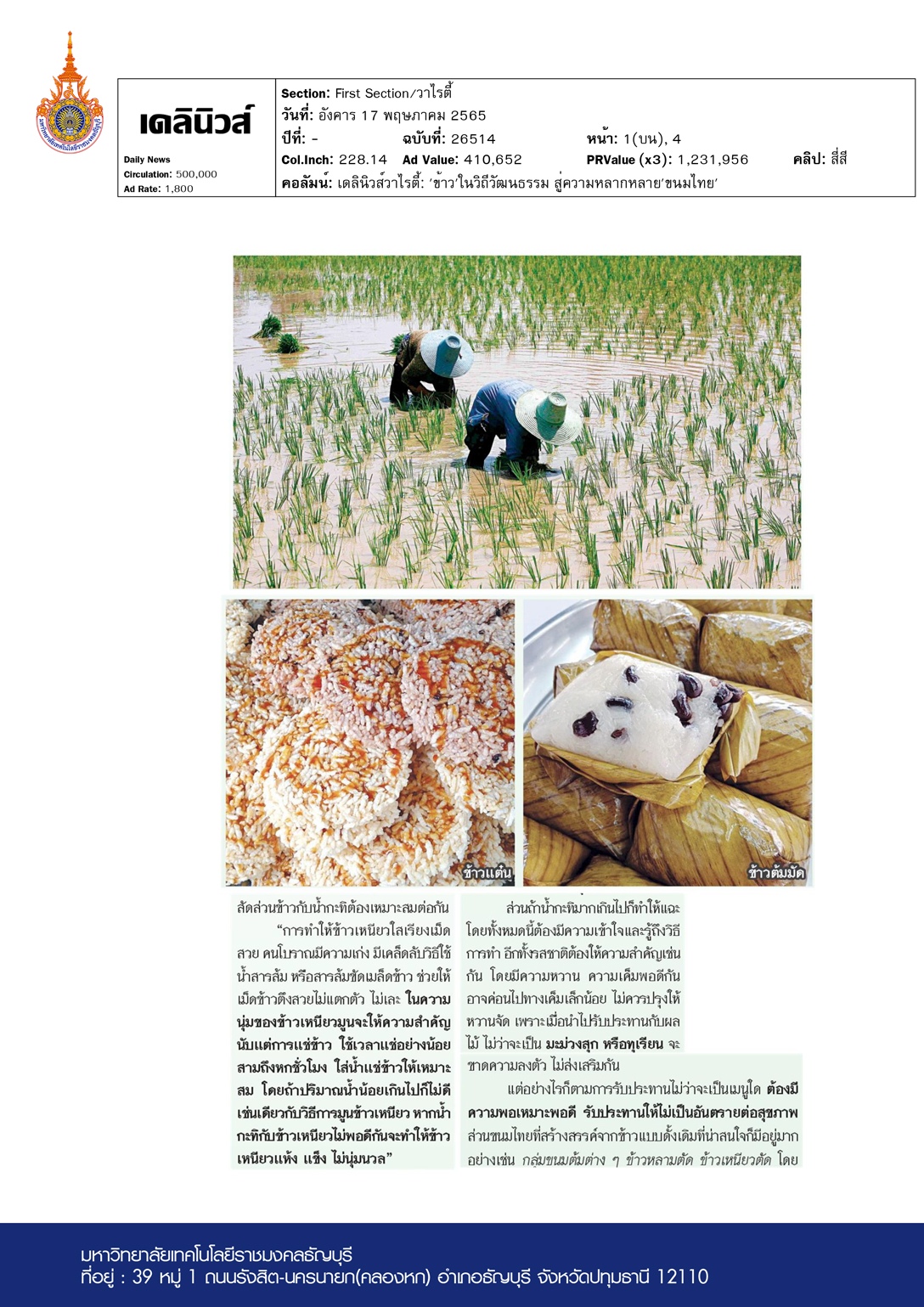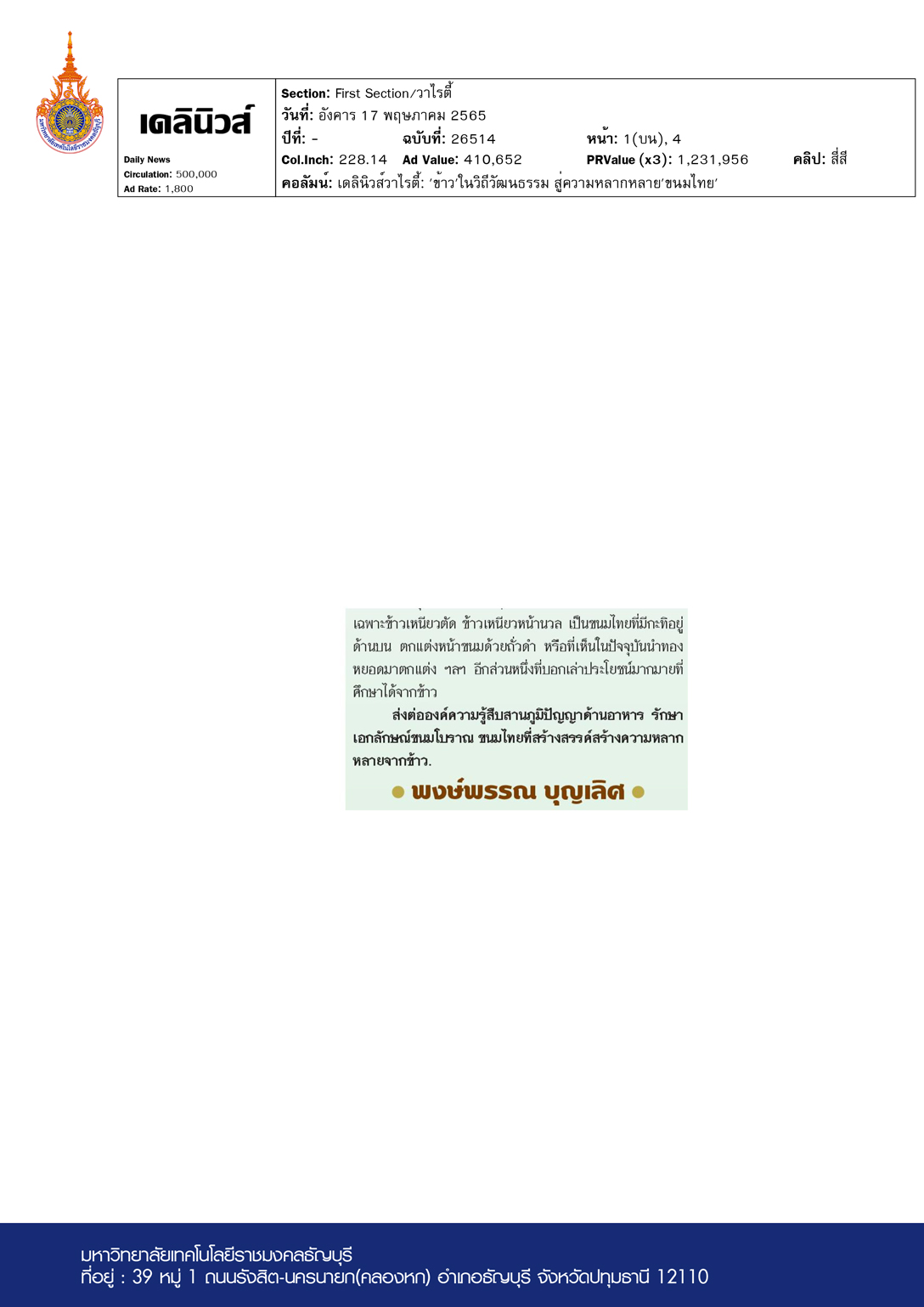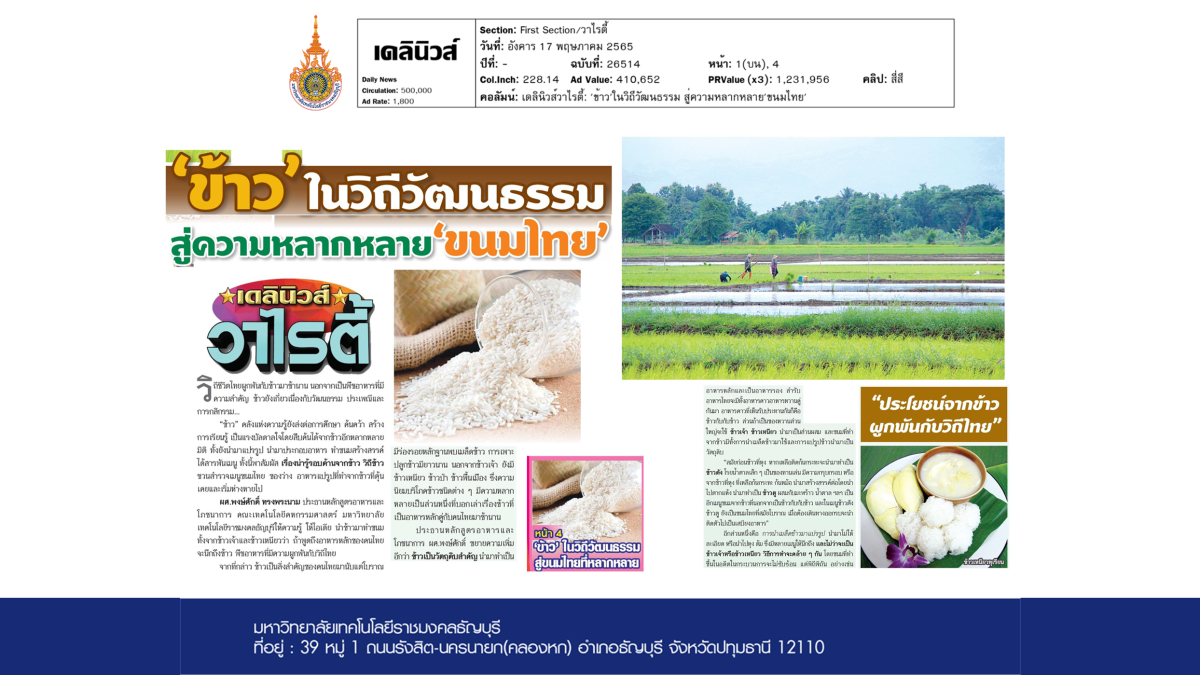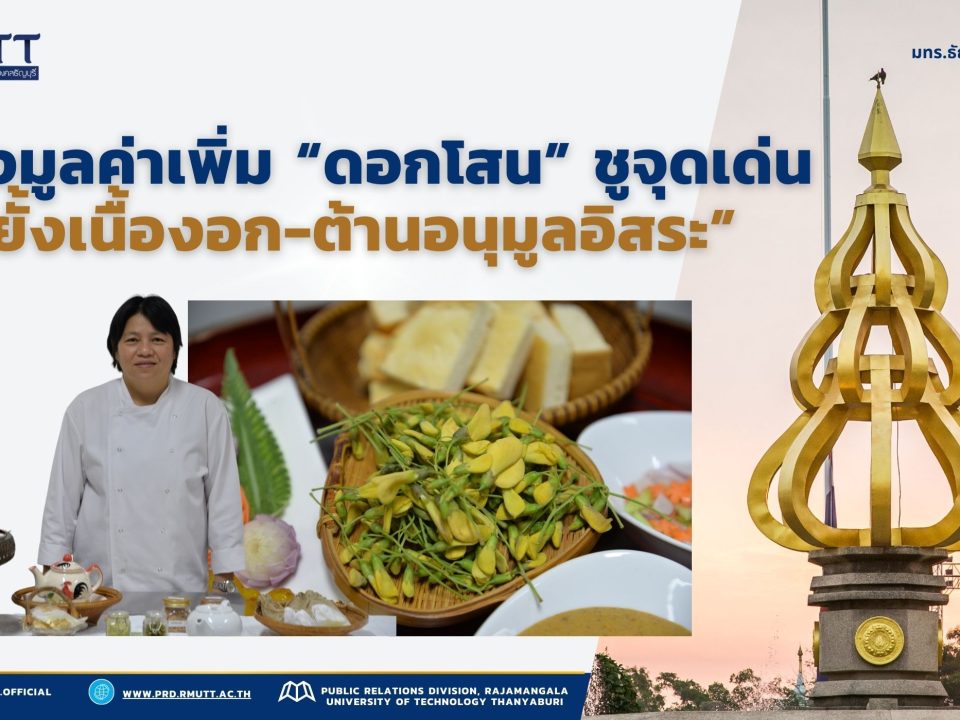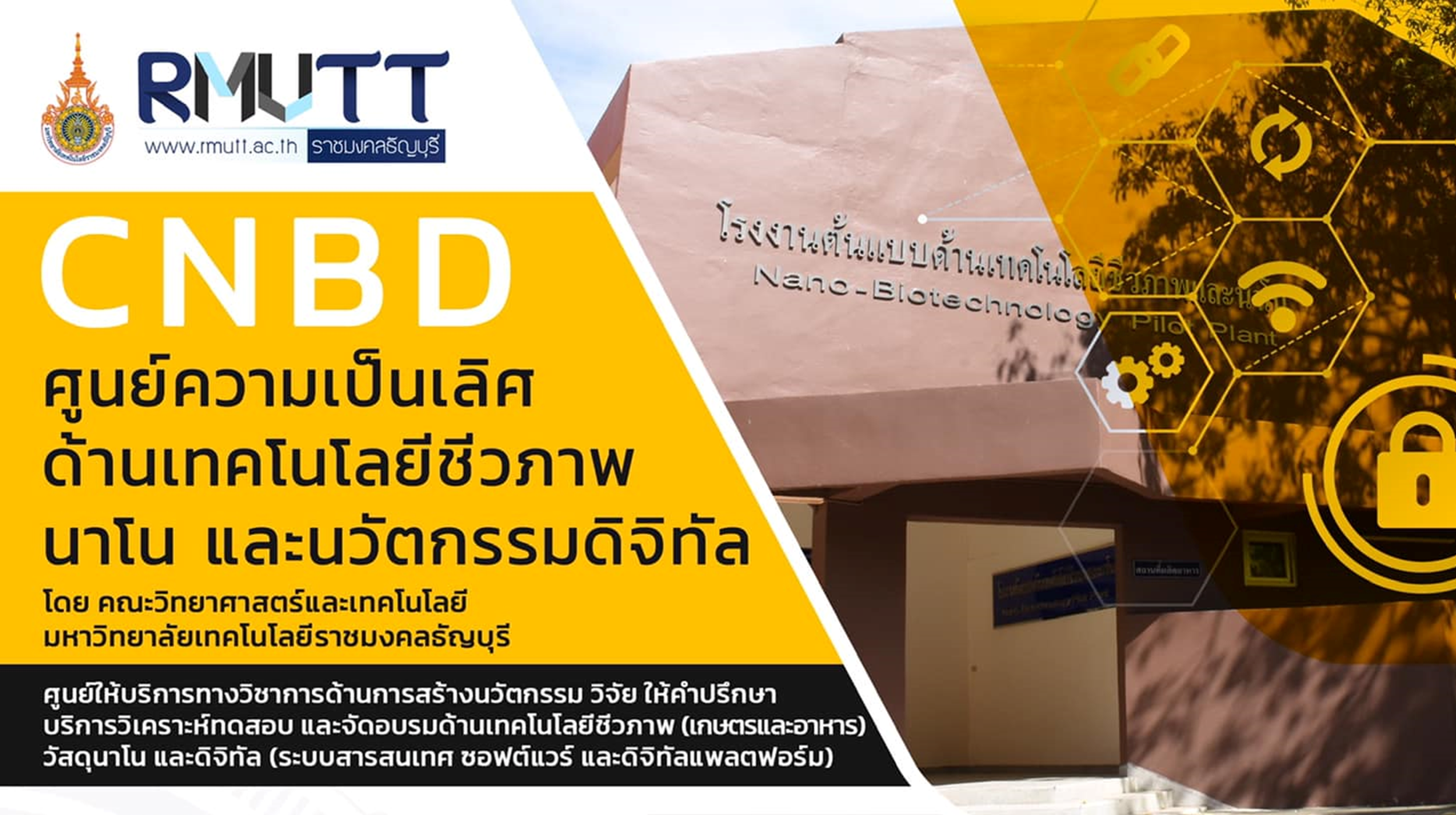
Center of Excellent in Nano-Biotechnology and Digital Innovation, Faculty of Science and Technology, Rajamangala University of Technology Thanyaburi (RMUTT)
13/05/2022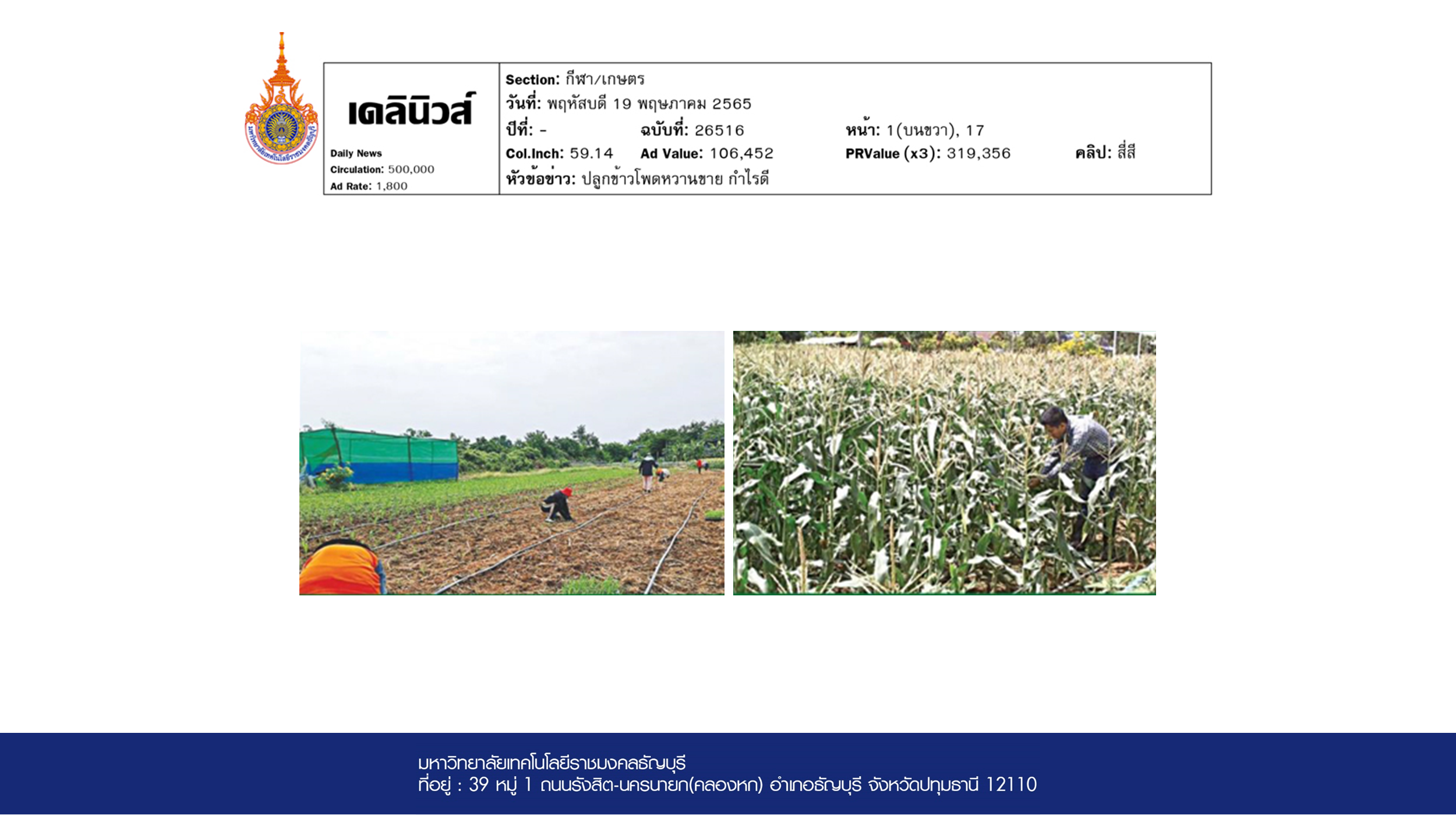
Good Sweet Corn Agricultural Practices come with Good Profits
19/05/2022Daily News: Published on 17 May, 2022 by Pongpan Boonlert
Rice has always been an intergral part of Thai people and culture and history for a very long time. Rice is not only Thailand’s one of the most important foods, it is also part of Thai traditions and agriculture. The importance of ‘Rice’ to Thailand has always been seen in various notions including research, education, and economics. Rice is considered to be very beneficial for Thais since it could be processed in various methods, cooked into intriguing meals and made into different types of desserts. Therefore, introducing the making of authentic Thai desserts with rice is something very traditional and yet very interesting.
Asst. Prof. Pongsak Chongpranam, Head of Food and Nutrition, Faculty of Home Economics Technology, Rajamangala University of Technology Thayaburi (RMUTT) offered ideas on how to create Thai delectable and traditional dessert menus with regular rice and sticky rice diners will love.
He said: “We all know that rice has always been an integral part of Thai culture since an ancient time. The archaeologists discovered evidence of domesticated rice including traces of ancient grains such as sticky rice, wild rice, local Thai rice. This could confirm that rice has always been indispensable part of Thailand and its culture for a very long time.
Head of Food and Nutrition, Faculty of Home Economics Technology, Mr. Pongsak added, “You could use rice as your main course or simply side dish. As we all know, Savory Thai dishes are delicious, but so are Thai desserts. Sticky rice or regular rice can be used as the main ingredients in the recipe of dessert.
“Back in the days, Thais used left-over rice that sticks at the bottom of rice bowl to make rice-based dessert by adding some sugar. Surprisingly, there were many Thai soldiers who prefer to have these delicious left-overs during the wartime. Right now, the idea has been transformed into desserts for sale, known as ‘Kao Tung’ or ‘Kao Tu’.
“There are also some other ways to make desserts from rice including milling, boiling, cooking, etc. An ancient delicate but not sophisticated cooking method of grilling glutinous rice on a stick over an open fire or ‘Khao Jee’ is another great example. ‘Kao Jee’ is made from grilled sticky rice dipped in prepared egg mixture. Beside ‘Khao Jee’, ‘Kao Pong Narng Led’ or Thai crispy rice cracker has always been one of the favorite desserts in Thai history that is also made from rice”, Mr. Pongsak said.
Thai ancient desserts or foods could be made in various cooking methods which include steaming, open-fire roasting, regular grilling, grilling in bamboo, etc. There are some many ways of your desserts smell perfect, just simply roasted them with plant leaves such as banana leaf. One popular and common dessert that are found all over Thailand is ‘Khao Tom Mat or ‘Khao Tom Pad’. In different regions of Thailand, ‘Kao Tom Mat’ is made differently. The ingredients may be quite similar but the techniques of doing are different. Another interesting dessert menu made from rice is ‘Krayasart’ or Thai crispy rice, peanut and sesame cereal bar which is prepared by stir-frying sticky rice and cooked into a sticky paste made from salt and sugar added coconut milk mix. You could find Krayasart prepared for Buddhist religious events as well as Khao Neow Kaew, and Khao Neaw Daeng. Thai desserts are just unique with delicate taste.
Associate Professor Pongsak continued, “Almost every part of regular and sticky rice plant can be turned into something that can be edible. Its seedling, for example, can be turned into ‘Khao Yaku’ dessert while its immature kernels can be processed into different types of ‘Khao Mao’ which include ‘Khao Mao mixed with Coconut milk’, Mixed Pounded Unripe Rice or ‘Khao Mao Kluke’, ‘Fried Khao Mao’, etc. For black sticky rice or in Thai language, ‘Khao Kum or Khaodum’ can be cooked into varied desserts such as glutinous rice with coconut milk or ‘Khao Larm Tud’, Thai sweet sticky rice cake or ‘Khao Neaw Tud’ and sweet sticky rice with longan or ‘Khao Neaw Peark’. Preserved sticky rice can be turned into dessert known as ‘Kao Mark’. I could just keep going on with sticky rice menus. There is also another dessert that you can’t miss and that is ‘Kao Niew Moon’ or Thai sweet sticky rice. Before we could make this delicious dessert menu, ‘Kao Niew Moon’, selection of sticky rice is very important so as the amounts of coconut milk mixture.
“Back in the ancient time, technique of making good sticky rice is considered very important. They use alum to clean the rice, just to make it soft but not too soft. They need at least 3 to 6 hours just soak the rice. Again, to make the perfect Khao Niew Moon, amounts of sticky rice and coconut milk should be balanced.”
“In case you put too much coconut milk in, the dessert will turn too wet, not as good as it should be. I almost forget, seasoning technique is also very important. Well balanced salt and sugar mixture lead to your perfect dessert. Khao Niew Moon could be eaten with ripe mango and durian.”
“At the end, no matter what dessert menu you want to enjoy, balance is the key. Different traditional Thai desserts can be beneficial to your health including ‘Khao Larm Tud’, ‘Khao Neaw Tud’ or ‘Khao Neaw Na Nuan’ which is also made from fried sticky rice seasoned with coconut milk and decorated with black bean or golden egg yolk threads. I would say that there are different things you can learn and study from local wisdom regarding Thai desserts made from rice”, Mr. Pongsak ended.
